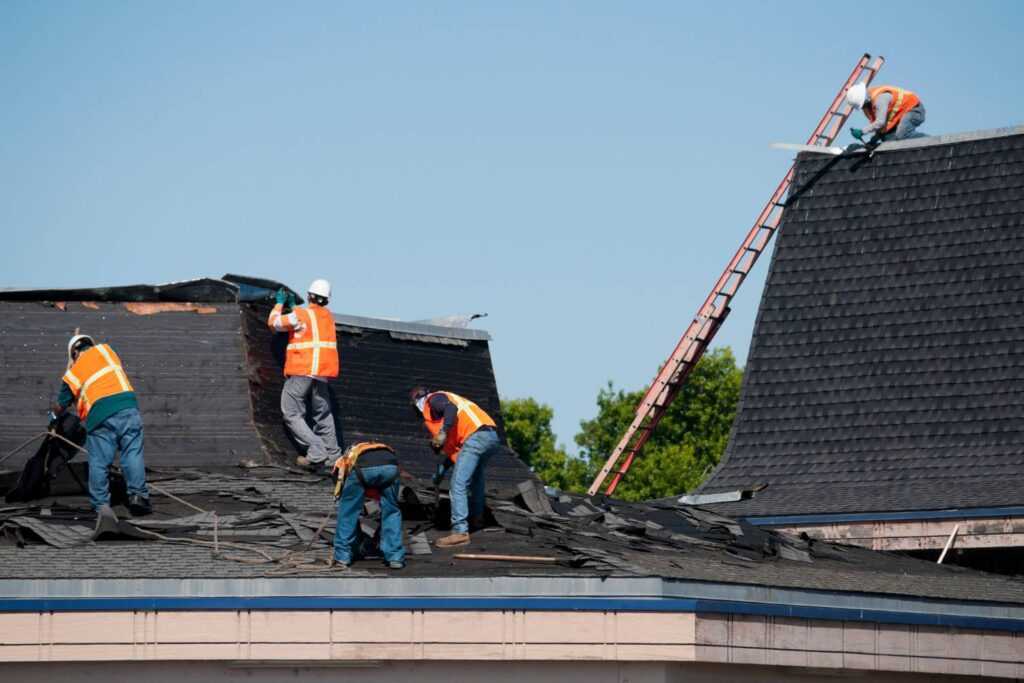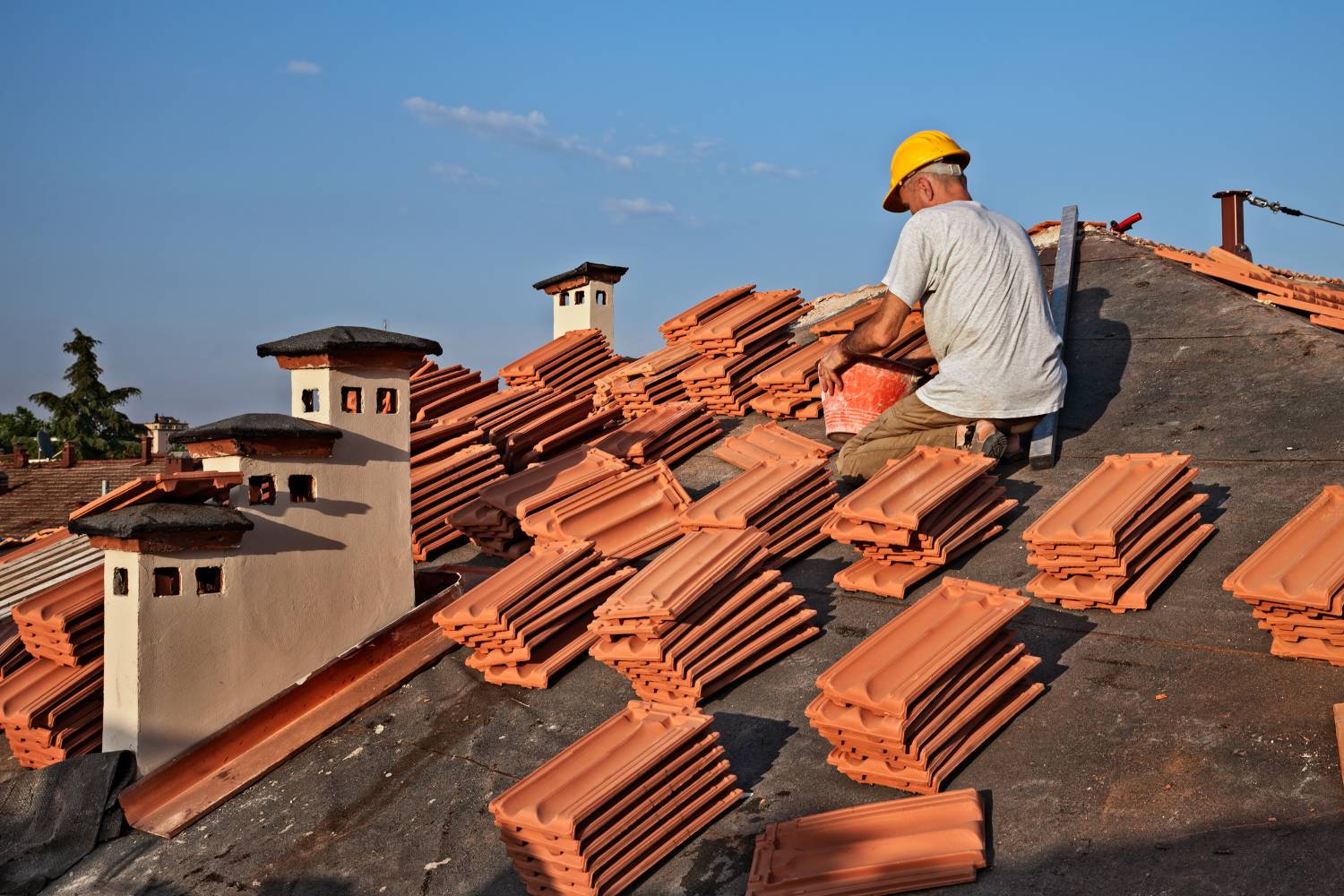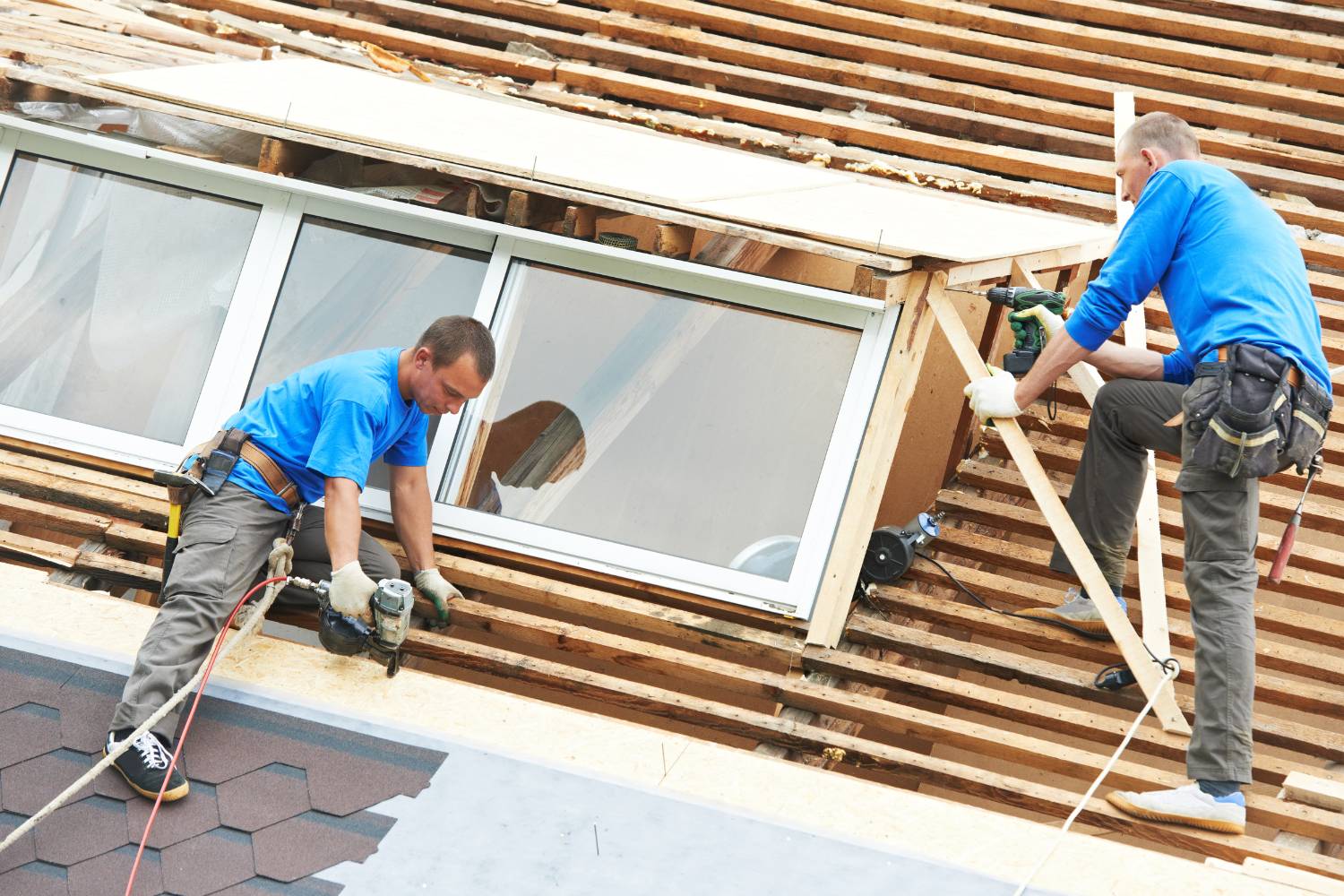Choosing between roof restoration and roof replacement is a significant decision for homeowners aiming to maintain their property's value and functionality. Whether you're dealing with minor wear and tear or severe structural damage, understanding the benefits and processes of each option is crucial for making an informed choice.
Roof restoration involves rejuvenating your existing roof to extend its lifespan and enhance its appearance. It's an affordable fix that can extend the life of your roof by up to 15 years, increase energy efficiency, and improve the exterior appeal of your house.
However, roof replacement is a full procedure that includes taking off the old roof and putting in a new one. This offers a long-term fix for roofs that have significant damage or are nearing the end of their useful lives.
We'll explore the benefits, materials, and services involved in roof restoration, as well as the steps, considerations, and advantages of roof replacement. By comparing these two options, you'll gain a clearer understanding of which method aligns with your specific circumstances and goals.
Whether you're seeking to preserve your roof's integrity with restoration or opting for the reliability of a brand-new roof, this guide will equip you with the knowledge to make the best decision for your home.
What is Roof Restoration and Why is it Important?
Roof restoration is a vital process in maintaining the longevity and integrity of your roof. This will provide a comprehensive guide on roof restoration, highlighting its importance, benefits, and various aspects involved in the process.
Benefits Of Roof Restoration
Roof restoration offers several benefits, making it an attractive option for homeowners:
- Extended Lifespan: Your roof's lifespan may be extended by up to 15 years with proper restoration.
- Cost-Effective: It is significantly cheaper than a full roof replacement.
- Improved Energy Efficiency: Reflective coatings can reduce heat absorption, lowering cooling costs.
- Enhanced Curb Appeal: Your home's worth can rise with a renovated roof because it will enhance its overall appeal.
Choosing The Right Materials
Selecting the appropriate materials for your roof restoration is crucial for its success. The choice depends on the type of roof, climate, and desired aesthetics. Common materials include:
- Metal Roofs: Require cleaning, rust inhibitors, and protective coatings such as acrylic, silicone, or elastomeric.
- Tile Roofs: Involve cleaning and securing loose tiles with adhesives.
- Asphalt Shingles: Need cleaning, repairs with roofing cement, and coatings to seal and protect.
Types Of Roof Restoration Services
Professional roof restoration services can address various needs:
- Repair: Fixing damage like broken tiles, damaged flashing, and leaks.
- Re-Roofing: Replacing the entire roof when it is beyond repair.
Factors Affecting Restoration Cost
- Roof Size: Larger roofs require more materials and labour.
- The extent of Damage: More extensive damage necessitates more repairs and higher costs.
- Material Choice: Higher quality materials increase the cost but offer better durability.
- Accessibility: Difficult-to-access roofs may require special equipment and safety measures, raising labour costs.
Is Roof Restoration Right For You?
Consider the following factors before deciding on roof restoration:
- Age of the Roof: Restoration is ideal for relatively new roofs with minor issues. Older roofs with extensive damage may need replacement.
- The extent of Damage: Minor issues are suitable for restoration, while significant structural damage may require replacement.
- Budget Constraints: Restoration is a budget-friendly alternative to a full replacement.
What is Roof Replacement and When Should You Consider It?
Roof replacement is a significant home improvement project that involves removing the existing roof and installing a new one. This process is essential for maintaining the structural integrity of a home and ensuring its protection from the elements. Here's a detailed guide to understanding the roof replacement process, including the key steps and considerations involved.
What Is Roof Replacement?
Roof replacement involves completely removing the old roofing materials and installing new ones. This process differs from roof repair, which addresses specific areas of damage without replacing the entire roof.
Over time, roofs can suffer from wear and tear due to weather conditions, age, and other factors. Replacing the roof is crucial to prevent leaks, improve energy efficiency, and enhance the overall appearance of the home.
Steps In The Roof Replacement Process
- Initial Inspection and Estimate
- Choosing Materials
- Preparing for Replacement
- Removing the Old Roof
- Inspecting and Repairing the Decking
- Installing the New Roof
- Final Inspection and Cleanup
Considerations For Roof Replacement
- Timing: It's best to replace a roof during mild weather conditions to avoid delays and complications.
- Contractor Selection: Choosing a reputable and experienced roofing contractor is crucial for a successful roof replacement.
- Cost: Roof replacement can be a significant investment. It's important to budget for unexpected expenses and consider financing options if needed.
- Warranty: Ensure the new roof comes with a warranty to protect against defects and future issues.
Comparing Roof Restoration And Roof Replacement
When it comes to maintaining the integrity and appearance of your roof, homeowners often face the decision between roof restoration and roof replacement. Both options have their unique benefits and considerations, making it essential to understand the differences to make an informed choice. Here's a detailed comparison of roof restoration and roof replacement, including their respective processes, advantages, and factors to consider.
Cost
- Restoration: Generally more affordable since it involves less labour and fewer materials. It is ideal for budgets constrained by minor repairs and maintenance.
- Replacement: More expensive due to the extensive labour and new materials required. It is a significant investment but ensures a brand-new roof.
Time
- Restoration: Quicker to complete, often taking just a few days, depending on the roof's condition and size.
- Replacement: This takes longer, typically a week or more, due to the thorough nature of the work involved.
Longevity
- Restoration: Extends the life of the existing roof by 10-15 years, depending on the quality of materials used and the condition of the roof.
- Replacement: Provides a new roof that can last 20-50 years, depending on the materials chosen.
Environmental Impact
- Restoration: More environmentally friendly as it reduces waste by reusing the existing roof structure.
- Replacement: Generates more waste due to the removal of old roofing materials but allows for the installation of more energy-efficient materials.
Suitability
- Restoration: Best suited for roofs that are generally in good condition but show signs of minor wear and tear.
- Replacement: Necessary for roofs with severe damage, extensive leaks, or when the roof has reached the end of its useful life.
Benefits Of Roof Restoration
- Cost-Effective: Less expensive than a full replacement.
- Quick Process: Faster to complete, minimising disruption to your home.
- Aesthetic Improvement: Enhances the look of your roof with a fresh coat of paint or sealant.
- Extended Lifespan: Adds 10-15 years to the life of your current roof.
- Eco-Friendly: Reduces waste by reusing existing materials.
Benefits Of Roof Replacement
- Long-Term Solution: Provides a brand-new roof that can last for decades.
- Comprehensive Fix: Addresses all underlying issues, including structural problems.
- Increased Property Value: Boosts the overall value of your home.
- Energy Efficiency: Opportunity to install modern, energy-efficient roofing materials.
- Peace of Mind: Comes with a new warranty, ensuring long-term protection.
- Factors to Consider When Choosing Between Restoration and Replacement
- When deciding between roof restoration and replacement, several critical factors must be considered to ensure the best choice for your specific situation. This blog explores the essential aspects of both options to help homeowners and building managers make informed decisions.
What Factors Should You Consider When Choosing Between Roof Restoration and Roof Replacement?
Roof Condition
- Assessment: Conduct a thorough inspection to evaluate the roof's current state, including visual inspections, core cuts, and moisture surveys. This helps identify the extent of damage and the overall health of the roof structure.
- Signs for Replacement: Extensive leaks, sagging areas, or significant structural damage indicate the need for a replacement. If the roof has multiple leaks or areas where the decking is compromised, replacement is often the best option.
- Signs for Restoration: Minor leaks, cracked tiles, or weathered surfaces may be suitable for restoration. If the damage is localised and the overall structure is sound, restoration can be a cost-effective solution.
Budget
- Restoration is generally more affordable but may not be cost-effective in the long term if the roof requires frequent repairs. Weighing the initial savings against potential future costs is crucial.
- Replacement, while costly upfront, offers longer-term savings and durability. Investing in a new roof can provide peace of mind and reduce the need for ongoing maintenance.
Long-Term Goals
- Maintenance and Longevity: Consider the expected lifespan of the roof and how long you plan to stay in the building. Restoration may be suitable for short-term solutions, while replacement is better for long-term planning.
- Energy Efficiency: A new roof can provide better insulation and energy savings, which might justify the higher initial cost. Modern roofing materials often offer superior thermal performance compared to older materials.
Insurance Considerations
- Insurance companies may prefer replacements as they ensure the roof is up to code and covered by a new warranty. This reduces the insurer's risk and provides clearer coverage terms.
- Some insurers may approve restoration if it includes a satisfactory warranty and is cost-effective. Check with your insurance provider to understand their preferences and requirements.
Environmental Impact
- Restoration is more sustainable as it reduces landfill waste. Reusing the existing roof structure helps minimise the environmental footprint.
- Replacement has a higher environmental footprint but may offer better long-term energy efficiency. The choice of materials and their recyclability can also influence the environmental impact.
Choosing The Right Approach
- Compatibility: Ensure the chosen method is compatible with the existing roofing system, local climate conditions, and building codes. Compatibility is crucial for the longevity and performance of the roof.
- Manufacturer Guidance: Consult with product manufacturers for recommendations on the best materials and techniques for your specific situation. Manufacturers can provide valuable insights into the most suitable products and application methods.
- Professional Advice: Engage experienced roofing contractors to conduct assessments and provide expert recommendations. Professional contractors can offer a detailed analysis and help you weigh the pros and cons of each option.
Conclusion
Deciding between roof restoration and roof replacement ultimately depends on your roof's condition, budget, and long-term goals. Both options offer unique advantages and cater to different needs. Roof restoration is an excellent choice for extending the life of your current roof, enhancing its appearance, and improving energy efficiency at a lower cost. In contrast, roof replacement provides a comprehensive solution for severely damaged roofs, offering longevity, improved structural integrity, and the opportunity to install modern, energy-efficient materials.
By carefully assessing the condition of your roof, considering the costs and benefits, and seeking professional advice, you can make an informed decision that best suits your specific circumstances. Whether you opt for restoration to preserve your existing roof or choose a replacement for a fresh start, understanding these options will help you maintain the value, functionality, and aesthetic appeal of your home.
Frequently Asked Questions
Roof restoration involves repairing and rejuvenating the existing roof to extend its lifespan and improve its appearance. This process includes cleaning, repairing minor damages, and applying protective coatings. On the other hand, a roof replacement offers a full solution for badly damaged or end-of-life roofs by removing all existing roofing materials and installing a new roof.
The choice is influenced by a number of variables, including as your budget, long-term objectives, the age and condition of your roof, and the degree of damage. Roof restoration is ideal for relatively new roofs with minor issues, while roof replacement is necessary for older roofs with extensive damage or multiple leaks. For your particular scenario, a professional roof assessment can help you choose the best course of action.
Roof restoration is generally more cost-effective than roof replacement. Restoration involves less labour and fewer materials, making it a budget-friendly option for addressing minor issues and extending the roof's life. On the other hand, roof replacement is a significant investment due to the extensive labour and new materials required, but it provides a long-term solution and can last for decades.
Roof restoration is typically quicker to complete, often taking just a few days, depending on the roof's condition and size. In contrast, roof replacement takes longer, usually a week or more, due to the comprehensive nature of the work involved, including removing old materials, repairing the decking, and installing the new roof.
Roof restoration is generally more environmentally friendly as it reduces waste by reusing the existing roof structure. This process minimises the environmental impact by avoiding the disposal of old roofing materials. Roof replacement, while generating more waste, can offer long-term energy efficiency improvements through the installation of modern, energy-efficient materials.


